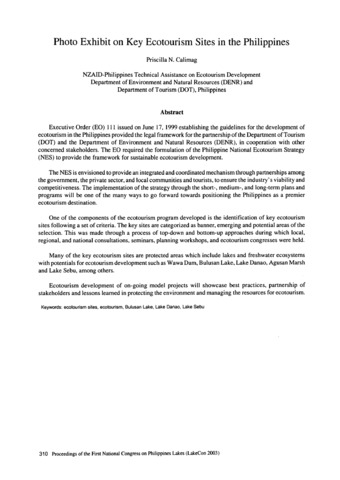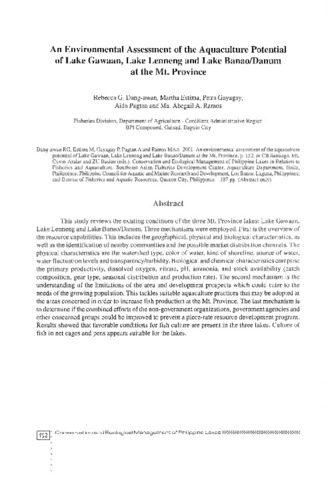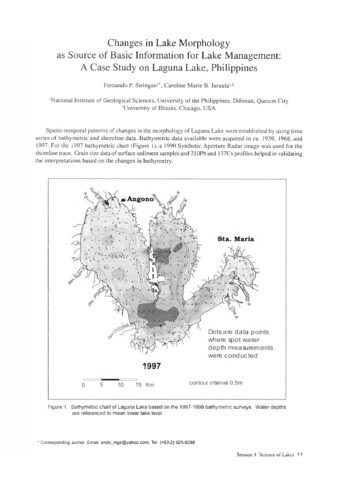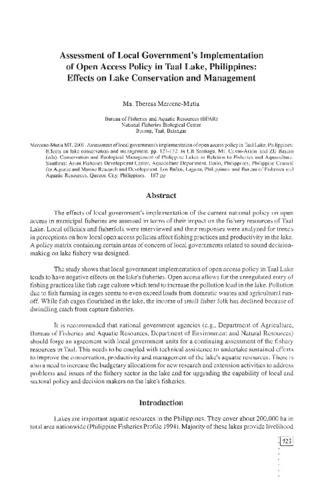Perlihatkan publikasi sederhana
Photo exhibit on key ecotourism sites in the Philippines
| dc.contributor.author | Calimag, Priscilla N. | |
| dc.contributor.editor | Cuvin-Aralar, Maria Lourdes | |
| dc.contributor.editor | Punongbayan, Raymundo S. | |
| dc.contributor.editor | Santos-Borja, Adelina | |
| dc.contributor.editor | Castillo, Lourdes V. | |
| dc.contributor.editor | Manalili, Eduardo V. | |
| dc.contributor.editor | Mendoza, Marlynn M. | |
| dc.date.accessioned | 2021-07-28T01:22:48Z | |
| dc.date.available | 2021-07-28T01:22:48Z | |
| dc.date.issued | 2005 | |
| dc.identifier.citation | Calimag, P. N. (2005). Photo exhibit on key ecotourism sites in the Philippines. In M. L. Cuvin-Aralar, R. S. Punongbayan, A. Santos-Borja, L. V. Castillo, E. V. Manalili, & M. M. Mendoza (Eds.), Proceedings of the First National Congress on Philippine Lakes (p. 310). Southeast Asian Regional Center for Graduate Study and Research in Agriculture (SEARCA). | en |
| dc.identifier.issn | 1656-8099 | |
| dc.identifier.uri | http://hdl.handle.net/10862/6158 | |
| dc.description | Abstract only. | en |
| dc.description.abstract | Executive Order (EO) 111 issued on June 17, 1999 establishing the guidelines for the development of ecotourism in the Philippines provided the legal framework for the partnership of the Department of Tourism (DOT) and the Department of Environment and Natural Resources (DENR), in cooperation with other concerned stakeholders. The EO required the formulation of the Philippine National Ecotourism Strategy (NES) to provide the framework for sustainable ecotourism development. The NES is envisioned to provide an integrated and coordinated mechanism through partnerships among the government, the private sector, and local communities and tourists, to ensure the industry s viability and competitiveness. The implementation of the strategy through the short-, medium-, and long-term plans and programs will be one of the many ways to go forward towards positioning the Philippines as a premier ecotourism destination. One of the components of the ecotourism program developed is the identification of key ecotourism sites following a set of criteria. The key sites are categorized as banner, emerging and potential areas of the selection. This was made through a process of top-down and bottom-up approaches during which local, regional, and national consultations, seminars, planning workshops, and ecotourism congresses were held. Many of the key ecotourism sites are protected areas which include lakes and freshwater ecosystems with potentials for ecotourism development such as Wawa Dam, Bulusan Lake, Lake Danao, Agusan Marsh and Lake Sebu, among others. Ecotourism development of on-going model projects will showcase best practices, partnership of stakeholders and lessons learned in protecting the environment and managing the resources for ecotourism. | en |
| dc.language.iso | en | en |
| dc.publisher | Southeast Asian Regional Center for Graduate Study and Research in Agriculture (SEARCA) | en |
| dc.subject | Bulusan Lake | en |
| dc.subject | Lake Danao | en |
| dc.subject | Lake Sebu | en |
| dc.subject | Ecotourism sites | en |
| dc.subject | Philippines | en |
| dc.title | Photo exhibit on key ecotourism sites in the Philippines | en |
| dc.type | Conference paper | en |
| dc.citation.spage | 310 | en |
| dc.citation.conferenceTitle | Proceedings of the First National Congress on Philippine Lakes | en |
| dc.subject.asfa | ecotourism | en |
| dc.subject.asfa | photographs | en |
| dc.subject.asfa | exhibitions | en |
Files in this item
Publikasi ini ada di koleksi berikut
-
LakeCon2003 [49]
Proceedings of the First National Congress on Philippine Lakes





